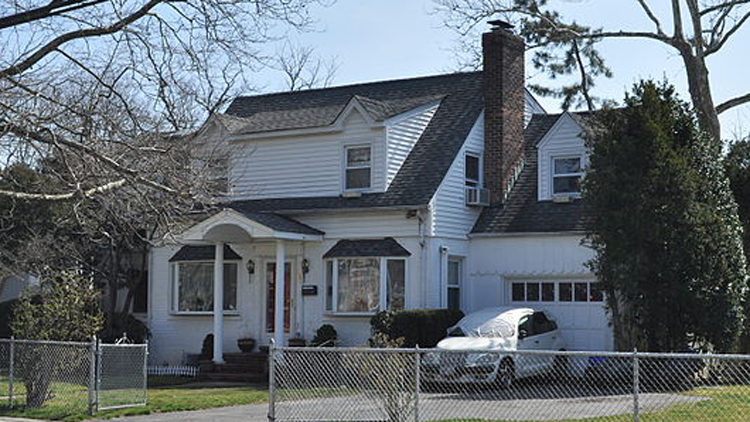Over the years a growing coterie of self-described pro-growth urbanists and like-minded real estate experts have turned up their noses on suburban land-use patterns. They argue that zoning—a local municipality’s power to determine land usage—is not only restricting Long Island’s ability to grow, but also to be affordable.
If zoning were removed from an area, the reasoning goes, then development would boom. In turn, thanks to the added growth, the housing supply would increase, and prices would plummet.
Unfortunately, this analysis is wrong.
What is a good foundation for basic economic theory is shaky ground for land-use policy. A simplistic economic dictum cannot distill the complex cocktail of factors that drive housing affordability. In the field of economics, the law of supply and demand is one of the first lessons. The principle dictates that as supply increases, demand decreases, and vice-versa.
The idea, these pro-growth proponents say, is that if the Island abandons the single-family model, then housing prices will naturally decline. If communities welcome mixed-use developments, density will therefore increase, and the region will become more affordable.
But the principle of supply and demand cannot be readily applied to Nassau and Suffolk counties as a wholesale solution to our affordability woes.
Long Island’s suburbia is home to regional factors that do not constrain market-driven development in more urban areas: limited vacant open space, environmental concerns that take precedence in zoning decisions, and an existing neighborhood scale that is comprised of tracts of pre-existing single-family homes.
All too often these “market urbanists” scoff at the mere mention of local zoning, but what they fail to realize is that single-use zoning, also known as Euclidian zoning, has its rightful place when executed properly. What they conveniently forget is that at one point in time that community, comprised of the residents who lived in that area, decided how their land should be used. Yes, local zoning needs to adapt to changing times, but the concept itself should not be disregarded by those critics who condescendingly mislabel it “NIMBY”-ism.
Stephen Smith, who writes for the New York City-based blog Market Urbanism, which is branded as “Urbanism for Capitalists,” goes so far as to argue that the lack of building permits in both Rye and Long Island showcases exactly what is driving up housing costs in each area. In a nutshell, Smith argues that if zoning oversight was more relaxed, or in some cases eliminated completely, prices would decline.
Instead, the application of zoning should be examined on a case-by-case basis. Is a municipality’s zoning restricting growth for legitimate, data-backed reasons? This question, paired with environmental study, should drive rezoning decisions at the local and regional level. Getting rid of zoning is not the answer.
What city-based writers like Smith fail to see is that legitimate urban planning standards very often drive zoning decisions. Further, housing starts don’t necessary equate with affordability, especially when you factor in scarcity of develop-able land in Westchester County, or the environmental restrictions on growth in Nassau and Suffolk counties.
The question of capacity also comes into play: Can existing wastewater or transportation systems mitigate the impacts of growth? In our older suburbs, the answer is a resounding no. Planners must also consider the concept of community scale: Is a 10-story apartment complex right for an area like Kings Point on Nassau’s Gold Coast, or decidedly suburban Rye? Based on the current-built environment in these communities, as well as their existing infrastructure networks, the answer is no.
The issue of housing affordability is frequently tied to the supply-and-demand-driven argument for changing suburban zoning patterns. The lure of less-expensive housing serves as a call to increase the supply. Stakeholders also frequently cite a distinct lack of young adults in older, exclusive communities. All too often, prevention of the “brain drain” is used as the rationale for upping developmental density, yet the problem of actual affordability is rarely addressed. Are these areas meant for young up-and-comers, or people further along in their careers and their stages in life? Is adding apartments to a suburban neighborhood that is equipped to support only tracts of single-family homes a good fit?
These are all concerns that planners, and the practitioners of the art and science of urban planning, work to address. We cannot trust bloggers chained to an ideology—be it libertarian, new urbanist or other—or stakeholders beholden to an agenda to drive the complex conversation on housing needs and affordability.
By focusing obtusely on supply and demand, these analysts ignore what is actually affecting the cost of living. Energy prices, village taxes, ever-rising school district expenditures, commuting and so on, all contribute to the financial burden faced by Long Island homeowners, and these factors are unaffected by increasing the housing supply. If anything, building more housing without properly expanding municipal services would exacerbate them.
In order to tackle our housing issues, we must have an honest assessment of what is truly the cause, and attack it head-on. People aren’t saying: “I want to build a new house on Long Island, but I can’t afford to do it.” Instead, they are saying: “It’s too expensive to live here.” Zoning itself isn’t the enemy. Unchecked suburban sprawl sparked by the baby boom generation and the subsequent fragmentation of inadequate municipal services is the culprit.
The suburbs of Westchester and Long Island have the demand. Let’s put our effort into making our ample existing supply affordable.
Rich Murdocco writes on Long Island’s land use and real estate development issues. He received his Master’s in Public Policy at Stony Brook University, where he studied regional planning under Dr. Lee Koppelman, Long Island’s veteran master planner. Murdocco will be contributing regularly to the Long Island Press. More of his views can be found on www.TheFoggiestIdea.org or follow him on Twitter @TheFoggiestIdea.

























